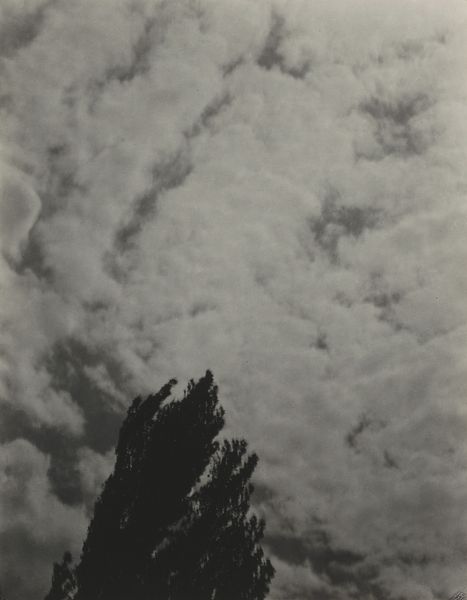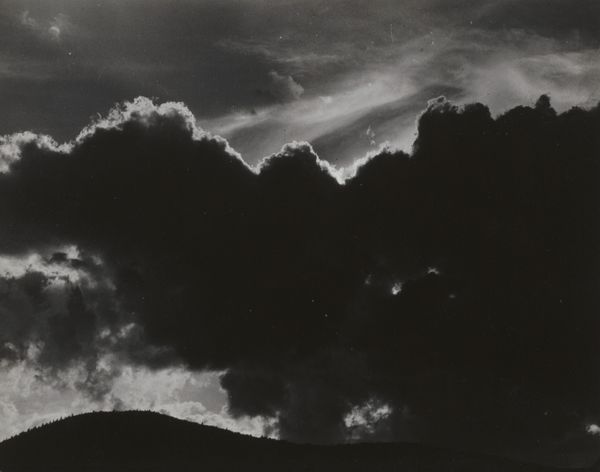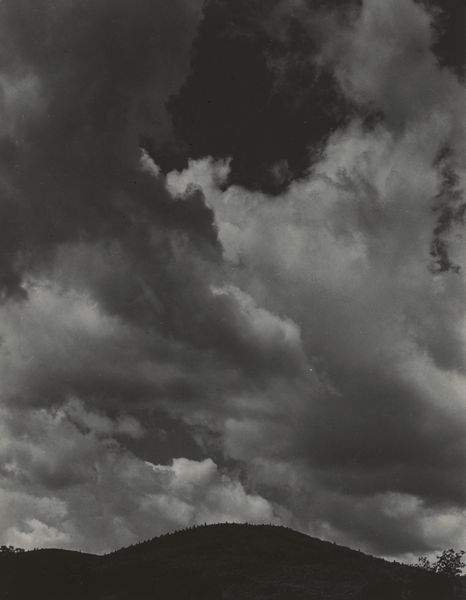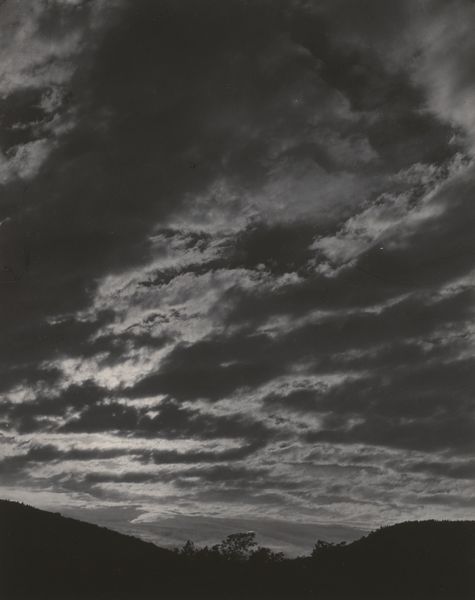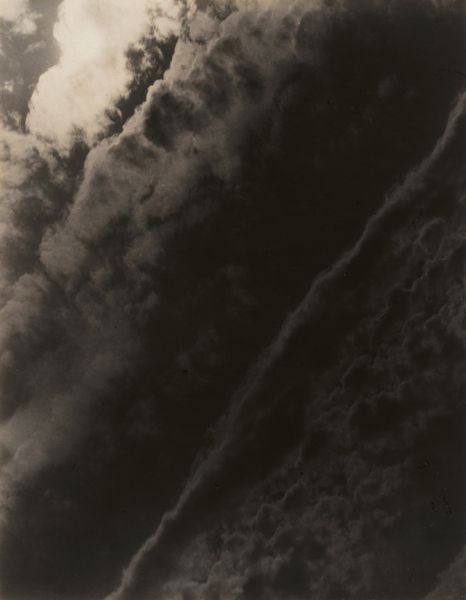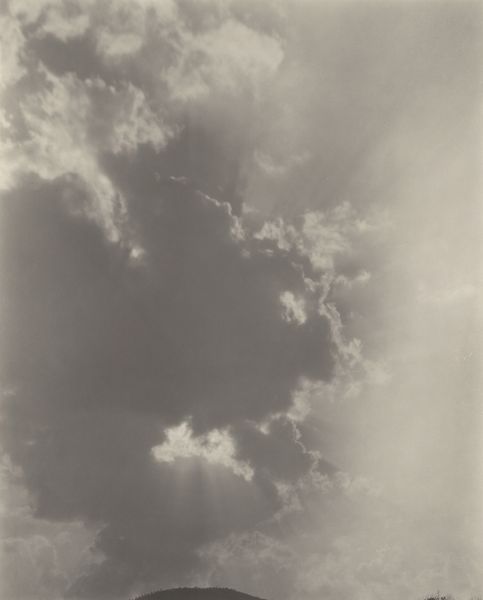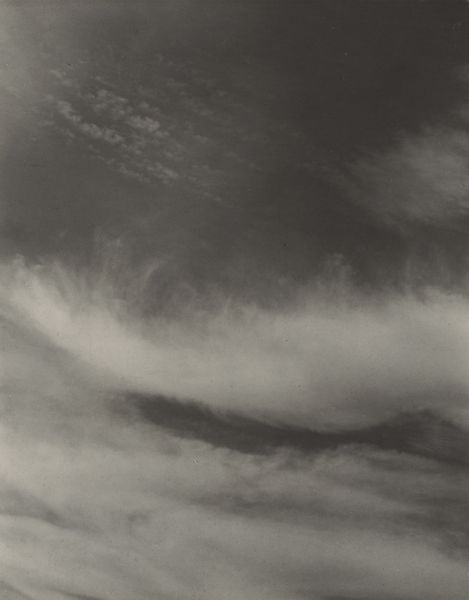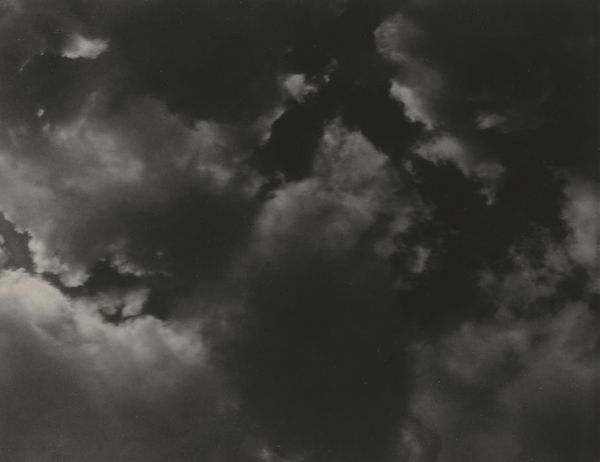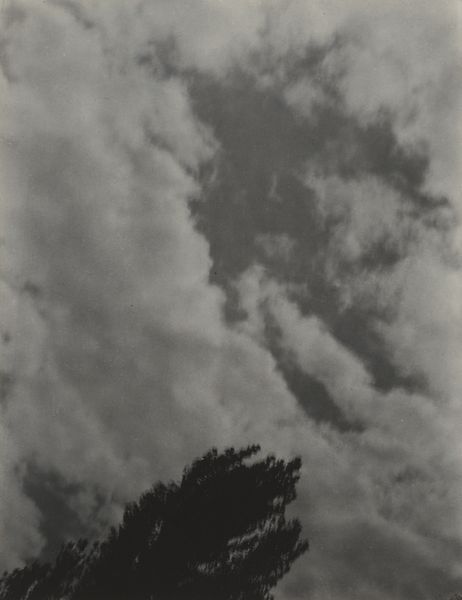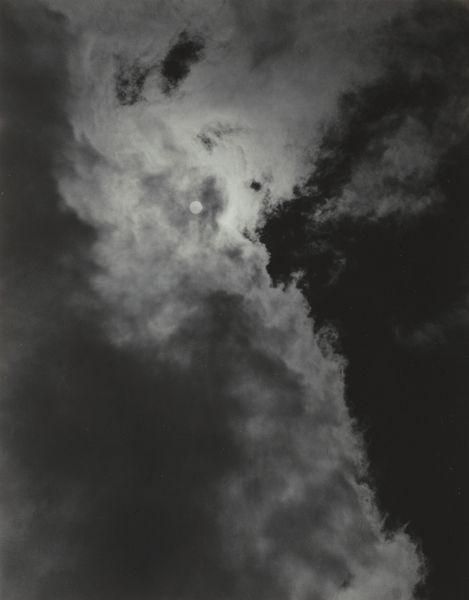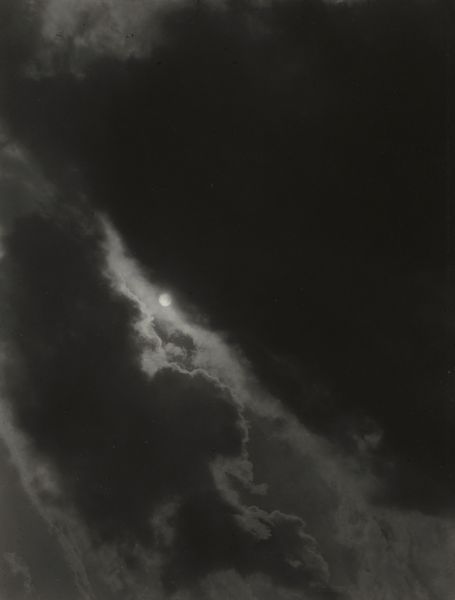
photography, gelatin-silver-print
#
black and white photography
#
pictorialism
#
landscape
#
photography
#
gelatin-silver-print
#
monochrome photography
#
abstraction
#
monochrome
#
modernism
#
monochrome
Dimensions: sheet (trimmed to image): 11.9 x 9.1 cm (4 11/16 x 3 9/16 in.) mount: 34.2 x 27.5 cm (13 7/16 x 10 13/16 in.)
Copyright: National Gallery of Art: CC0 1.0
Editor: We’re looking at "Equivalent," a gelatin-silver print by Alfred Stieglitz, taken in 1926. It's predominantly clouds, dramatic and abstracted. What do you see in this piece in terms of its historical context? Curator: This image, part of Stieglitz’s “Equivalents” series, challenges the conventional understanding of photography at the time. Think about pictorialism, which emphasized the aesthetic qualities and artistic intention. He moved away from using photography to simply document reality, using the camera to explore internal states and project them onto the natural world. In what ways do you feel that approach relates to broader changes within artistic institutions in the 1920's? Editor: So, it’s less about capturing the external world and more about…personal expression? Was he responding to the rise of abstract painting at the time? Curator: Precisely. There was a tension at that moment concerning the role of art. Post World War I, many artists felt a need to express intangible, subjective realities. These photographs functioned as a commentary on art's new social and cultural function, and served as a reminder that photography could offer emotional depth similar to painting and sculpture. Does it challenge your own understanding of what a photograph should be? Editor: It does! It makes me reconsider the artistic choices involved in photography – composition, light, contrast. It’s not just pointing and shooting. Curator: Exactly. By focusing on clouds, a subject seemingly devoid of concrete meaning, Stieglitz shifted the focus towards the emotional resonance of the image itself. His use of the cloud, and the decision not to showcase what the technology could record with crystal clarity, was absolutely a bold step toward claiming artistic agency. Editor: I never thought of cloud photography as such a radical artistic statement. I will definitely think twice about how art reflects its time. Thanks. Curator: Indeed. These photos changed the status of photography and its exhibition within galleries and the wider culture, and the conversation continues.
Comments
No comments
Be the first to comment and join the conversation on the ultimate creative platform.

